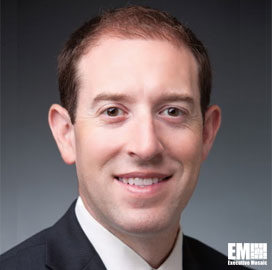
As companies wrap up 2016 financials, many company owners, investors and executives are expected to revisit their exit strategies. In parallel, 2016 transaction lists are gathered and shared amongst the GovCon community, and emerging trends of “hot markets†and “sought after capabilities†are brought to the forefront as industry looks at 2016 to identify how to maximize value. Websites and company brochures are frantically changed, and corporate off-sites focus on how to pivot towards the next “cyber†or “dev ops†trendsetter.
In thinking about the theme of the 2016 GovCon collection and into early 2017, it’s clear that the employee stock ownership plan (“ESOPâ€) is making a comeback.
Having origins back to the 1950’s, the ESOP has come in and out of favor since its inception. Broadly defined, an ESOP is a qualified defined-contribution employee benefit (ERISA) plan designed to invest primarily in the stock of the sponsoring employer. ESOPs are “qualified” in the sense that the ESOP’s sponsoring company, the selling shareholder and participants receive various tax benefits.  In a hyper competitive GovCon environment, the ESOP has re-emerged as both a powerful recruitment and competitive financial differentiator, and/or an alternative liquidity for successful businesses lacking adequate market interest to facilitate a sale to an outside party.
Given the common ownership amongst the employees, the benefits of employee ownership are obvious and typically manifest in a more natural comradery and mission buy-in amongst employees. As the ESOP company succeeds, so do the employees, as the enterprise supersedes the entrepreneur. In an environment in which “having the best people†affords customer intimacy, technical capability and program continuity, even a slight advantage in being able to attract top talent and have them 100% committed to the corporate vision is powerful. From a financing perspective, the S-Corp ESOP is a pass-through entity which defers taxes to the ESOP holder, and thus those tax benefits translate to excess cash flow for debt service/pay down, investment and to support M&A initiatives relative to the non-ESOP company, both of which can bend the growth curve in what has been a slower growth macro environment over the past few years.
From a transaction perspective, company owners can utilize the ESOP to effectively sell their business to their employees, opening up liquidity avenues which may not otherwise exist given the increasing selectiveness of buyers, especially as it relates to contract characteristics (e.g., set-asides) or the perception of unsustainable above average margins. While a change of control, the ESOP maintains the corporate culture, and continuity of relationship to the customer. There is also flexibility in the structure ranging from a partial to a full ESOP buyout, and leveraged (using 3rd party debt), unleveraged (using seller notes) or combination of financing structures. While the ESOP trust will have a financial advisory and the trustee will adequately research and negotiate the ESOP transaction terms, the business will often ultimately be spared from much of the voluminous diligence of a traditional outside sale process. Finally, and contrary to popular belief, ESOPs can be sold, much like non-ESOP LLCs, S-corps and C-corps. The ESOP can be a means to an end.
However, as important as understanding what ESOPs are, is what they are not. They are not a one for one replacement of a traditional 100% sale. The ESOP trust is a financing instrument, which lacks the strategic synergies of a corporate buyer or strategic vision and best practices of private equity. The ESOP trust needs to secure financing to consummate the buyout, and borrowings do have a limit. ESOPs are also heavily regulated, and the valuation put on the business needs to be negotiated with and acceptable to the appointed trustee on behalf of the ESOP trust (for the benefit of the employee beneficiaries). These fiduciary, financial and strategic limitations often result in a lower valuation for the business than the traditional sale. Sellers to the ESOP will also often need to provide some level of subordinated seller-financing as well. What may be most important to understand, is that the sale to an ESOP is a change-of-control in the eyes of the SBA. For many mid-sized firms, the lack of marketability is directly tied to the valuation discount and risk perception of a change of control and the need to recertify contract awards under respective preference programs. While the perceived risk of the change of control (option exercise likelihood, pending new business size protests) can be neutralized in the eyes of the customer given the aforementioned benefits, these risks are real for the sources of third party financing and in the eyes of the ESOP trustee and its financial advisor.
As a result, while the ESOP is an internally negotiated transaction and there is some latitude around economics to the seller, there are constraints. One answer to the financing question is often seller financing, in which there is very little external debt and most of the purchase price is in an IOU to the sellers. This remains a head-scratcher to many deal makers because the seller sacrifices meaningful upside as the owner but maintains the downside risk of the operations needed to repay that IOU. That said, a really unique ESOP opportunity in the set-aside world is for businesses that primarily compete under headcount vs. revenue NAICS codes. In these instances, the ESOP can recertify, dramatically changing the risk paradigm on valuation and financing to the positive.
As trends come and go, so will the ESOP. Changes in tax rates (likely lower), regulation, emphasis on small business, and market conditions in general will influence the longevity of this cycle. However, the ESOP remains a clear trend from the 2016 collection and something worth paying close attention to in 2017.




